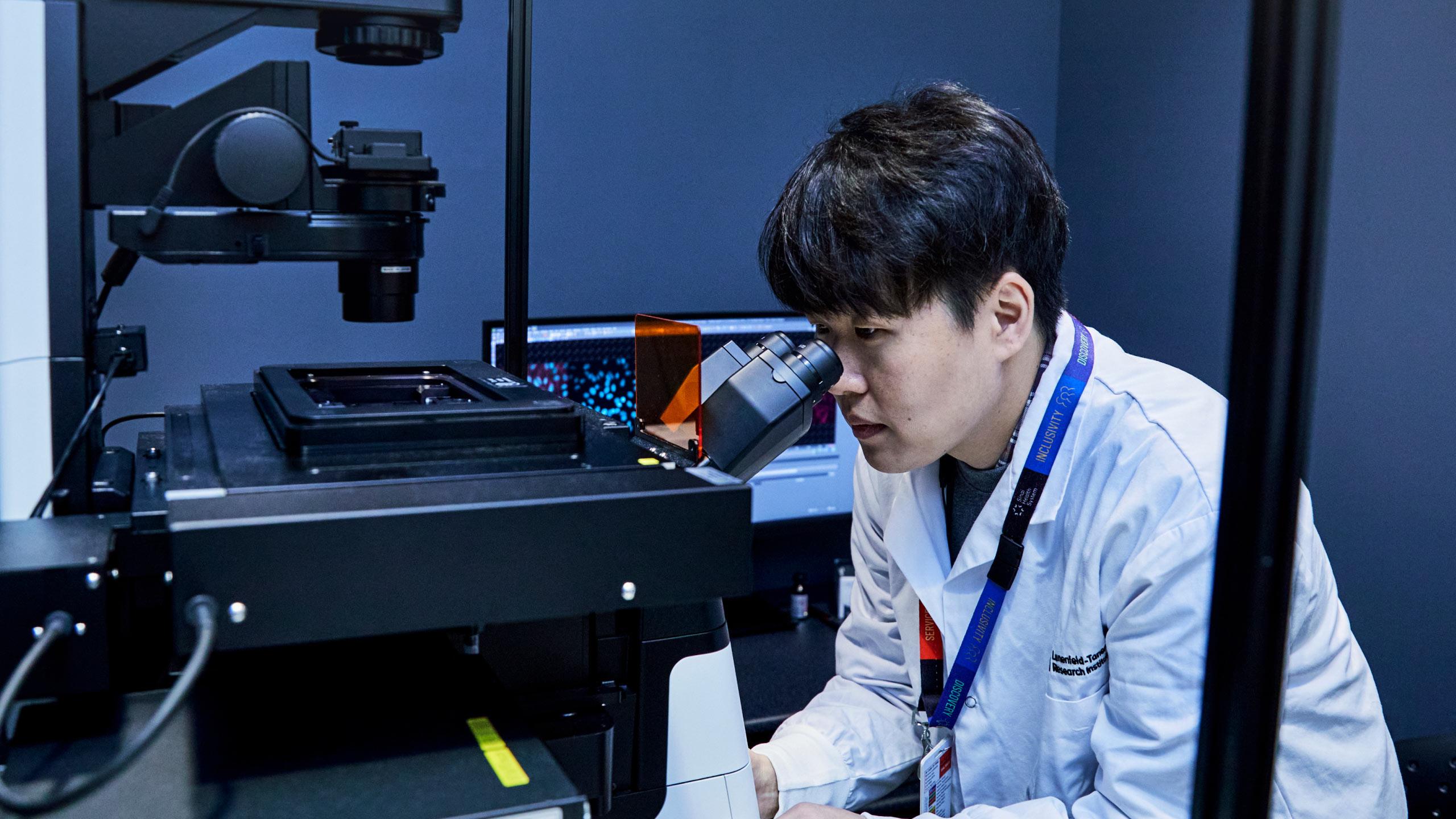Crohn’s Disease
Learn more about Crohn's disease and how it is treated.
Overview
Crohn’s disease is a condition where inflammation and swelling in your digestive system leads to gastrointestinal symptoms. It is one of two main types of inflammatory bowel disease (IBD) conditions.
In Crohn's disease, the lining of the bowel is inflamed and has “skip lesions.” A skip lesion refers to areas with ulcers that are separated by areas of healthy bowels.
Crohn’s disease can affect any part of the gastrointestinal system. For many people, the end of the small bowel and the beginning of the colon, called the terminal ileum, is affected.
Crohn's disease tends to begin in childhood or adolescence. Some people with Crohn’s disease do not experience their first symptoms until after age 40. It is a lifelong condition that has periods of flare-ups (symptoms) followed by periods of remission (no symptoms).
Types of Crohn's disease
Crohn’s disease symptoms and treatment are influenced by where the disease is located.
- Terminal ileal disease occurs where the small bowel joins the colon. Symptoms include bloating, cramping and the inability to tolerate fibrous foods, such as fresh fruits and vegetables.
- Small bowel disease occurs across multiple areas of the small bowel. The diseased segments become severely narrowed, causing bowel obstruction.
- Colon disease refers to inflammation of the colon and/or rectum.
Fistulizing/penetrating Crohn’s disease: In some cases, ulcers extend through the bowel wall, creating a tunnel to another part of the intestine or another organ. This is called a fistula.
Non-fistulizing, non-penetrating Crohn’s disease: This refers to Crohn’s disease without fistulas or abscesses.
Stricturing Crohn's disease: A stricturing is a narrowing of the intestines that can be caused by scar tissue that develops over time.
Perianal Crohn's disease: When Crohn's disease affects the area near the anus, it can cause complications that require specialized care.
Diagnosis
The symptoms of Crohn's disease vary from person to person and can include:
- Diarrhea
- Abdominal cramping
- Weight loss
- Fatigue
- Nausea and vomiting
- Bloating or a feeling of fullness in the abdomen
- Joint pain or fever
- Rectal bleeding
If you are experiencing symptoms of Crohn's disease, your family physician or an IBD specialist may recommend some of the following tests:
- Blood tests
- Stool tests
- A colonoscopy to look at your large intestine
- An upper endoscopy to look at your esophagus and stomach
- A biopsy to test a small sample of inflamed tissue
- Medical imaging, such as X-rays, CT scans or MRIs
Treatment
Crohn's disease is managed with medication, surgery and lifestyle changes. We will work with you to decide on a care plan that is specific to your needs. Our recommendations will depend on your age, general health, the severity of your condition and other life factors.
Monitoring
Ongoing monitoring is an important part of the management of Crohn's disease. You will have regular follow-up appointments with our IBD specialists to watch for changes in your disease and to adjust your care plan as needed.
You can expect regular testing that may include:
Medication
Medication is used to help control chronic intestinal inflammation. We work with each patient to choose medication that will lessen or eliminate symptoms and cause minimal side effects.
Corticosteroids help control the immune system and lessen the inflammation and symptoms of Crohn’s disease over the short term. They are not recommended for long-term use due to side effects.
Immunomodulators modify the activity of the immune system to prevent ongoing inflammation. They can be used over the long term to maintain remission in some patients.
Antibiotics reduce infection and are used to treat the symptoms and complications of Crohn’s disease, such as abscesses and fistulas.
Advanced therapies (such as biologics and small oral molecules) are the newest treatments for IBD. Your care team will work with you to determine the best treatment plan.
Surgery
Some patients with Crohn’s disease require surgery. The type of surgery needed depends on where the disease is located.
Terminal ileal disease
Resection: A surgeon removes the end of the small bowel and the beginning of the colon. This is called an ileocolic resection. The two ends are joined back together, called anastomosis.
If there is infection or severe inflammation in the area of the surgery, the patient may need a temporary ostomy while the area recovers.
View this video for helpful information on Ileocolic resection for Crohn's disease by TVASurg - The Toronto Video Atlas of Surgery.
Small bowel disease
Resection: This procedure is recommended if long sections of the bowel are affected by disease and if a patient has not had a resection in the past. A surgeon removes the portion of the bowel with disease. The bowel is then joined back together, called anastomosis.
Stricturoplasty: This procedure is recommended if multiple short segments of the bowel are affected by disease or if a patient is at risk of short bowel syndrome from previous surgeries. It involves opening up narrowed areas of the bowel without removing them.
The decision between resection and stricturoplasty is usually made at the time of surgery, based on what is found and which option will offer the best outcome to the patient.
Colon disease
Ileorectal anastomosis: This procedure is recommended when the colon is inflamed and the rectum is not. It involves removing the colon and joining the small bowel, or ileum, to the rectum.
Proctocolectomy: This procedure is recommended when the rectum is diseased along with the colon. It involves removing the rectum and colon and creating a permanent ileostomy for bodily waste to pass externally.
Perianal disease
Perianal disease can result in fistulas, fissures and abscesses. Medication is usually the first treatment offered to the patient. If medication does not work, surgery is often recommended and can include:
- The insertion of draining tube to prevent abscesses
- A temporary ostomy to allow the perianal area to heal
- A proctectomy, which involves removing the rectum to create a permanent ostomy
Ostomy
An ostomy, also referred to as a stoma, is a surgically-created opening that allows for the drainage of bodily waste. It is usually on the abdominal wall.
Temporary stomas may be used in for:
- Emergency or semi-urgent surgeries, where resection and joining of the bowel is unsafe due to an infection in the abdomen
- Perianal sepsis or infection that requires bodily waste to be diverted to allow for healing
- Post-surgery complications, such as leaks from areas where the bowel has been joined
Permanent stomas may be needed if the rectum and anus are severely affected by disease.








